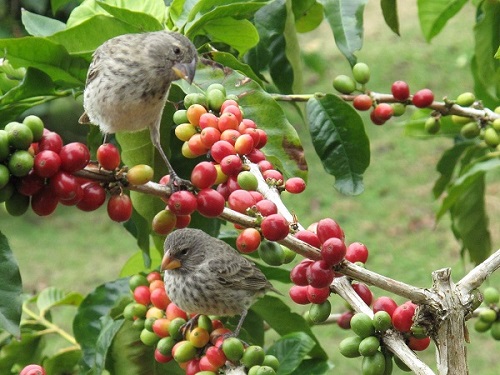
More good news for coffee lovers!! Now a study has found that coffee cultivation is beneficial to biodiversity. This new study from Western Ghats led by Krithi Karanth suggests that coffee cultivation does not interfere with bird biodiversity, regardless of the type of bean.
The impact of coffee on biodiversity has been studied earlier, particularly in Latin America. The conclusion of most of those studies was that biodiversity impact increases as more intense farming techniques are used. Rustic coffee, where coffee plants are grown interspersed with forest trees has the least impact on vegetation and birds. Shade grown monoculture has impacts more than rustic coffee.

The study shows that coffee growing does not affect all organisms the same way. Migratory birds are impacted far less than resident birds, and canopy-dwelling birds suffer fewer losses than ground-dwelling or understory species. Rustic coffee noticeably reduces ant biodiversity, but it doesn’t get much worse after that no matter how the coffee is cultivated.
The price of coffee can also affect the biodiversity. When demand increases and prices rise, deforestation to make room for coffee increases. Even though coffee-growing is not the most harmful use of land, it’s still not as good for biodiversity as forest would be. The bigger risk is the time when prices crash due to overproduction. Limiting production is the necessary step to avoid similar crises.

The study has only a far less information about impacts on other organisms like reptiles, butterflies, mammals, etc. However, this new Indian study is a positive news. To maintain biodiversity, rustic coffee should be prioritized, and steps taken to minimize impacts in other types, such as allowing trees and epiphytes to grow. But the major task is making these techniques into a viable and profitable method. Otherwise farmers will often find themselves forced to switch to more destructive crops.
(Source: JSTOR Daily)










